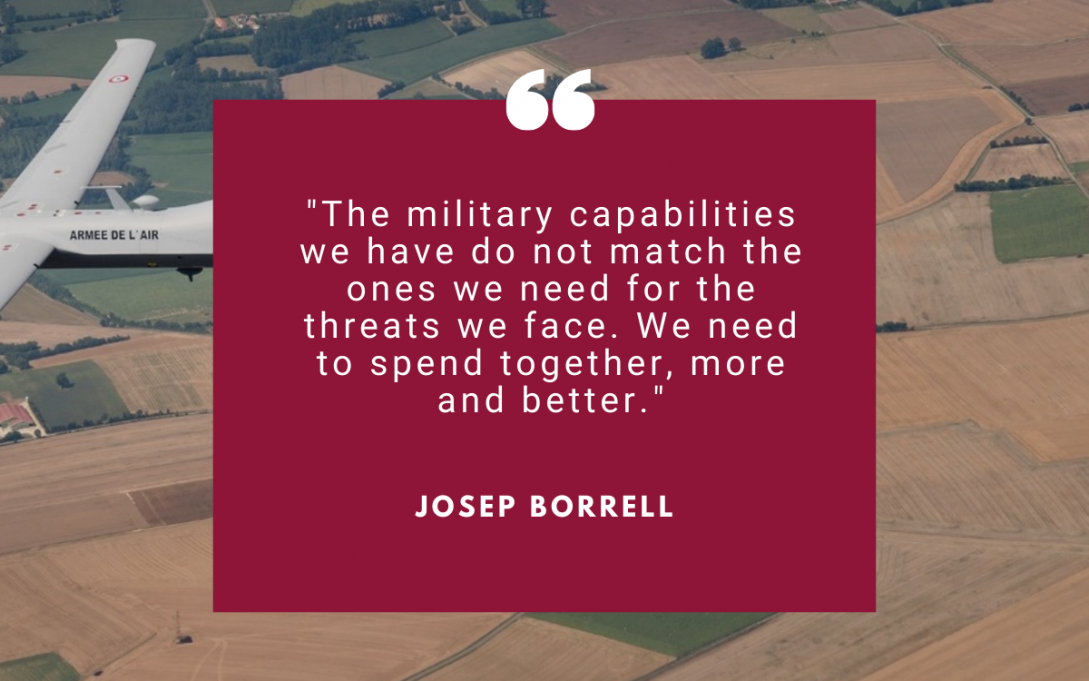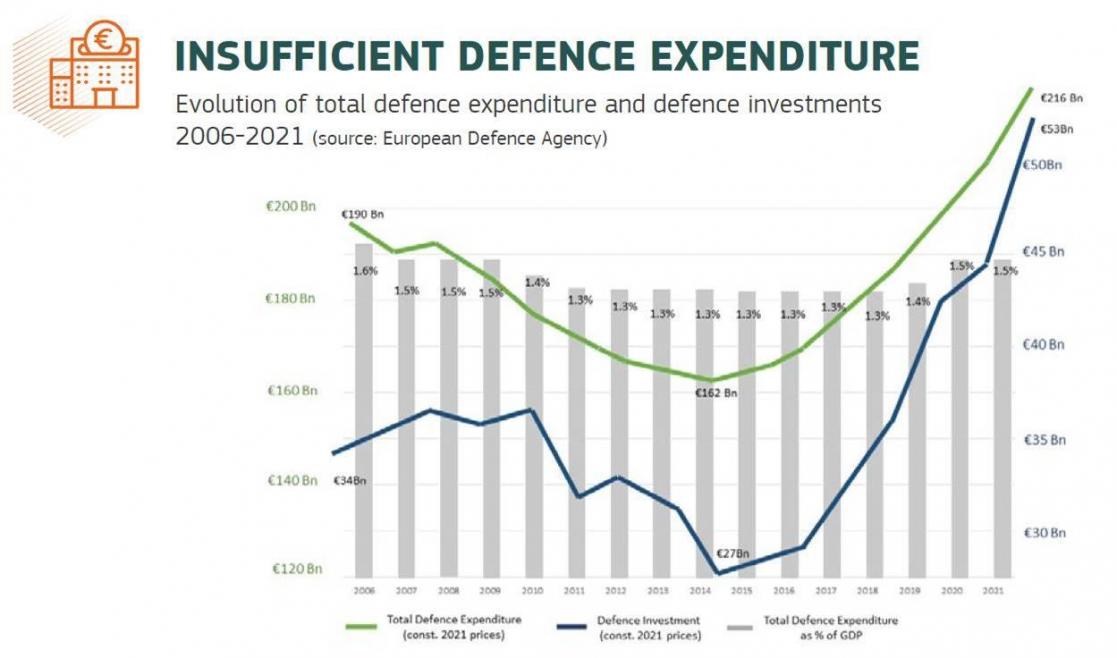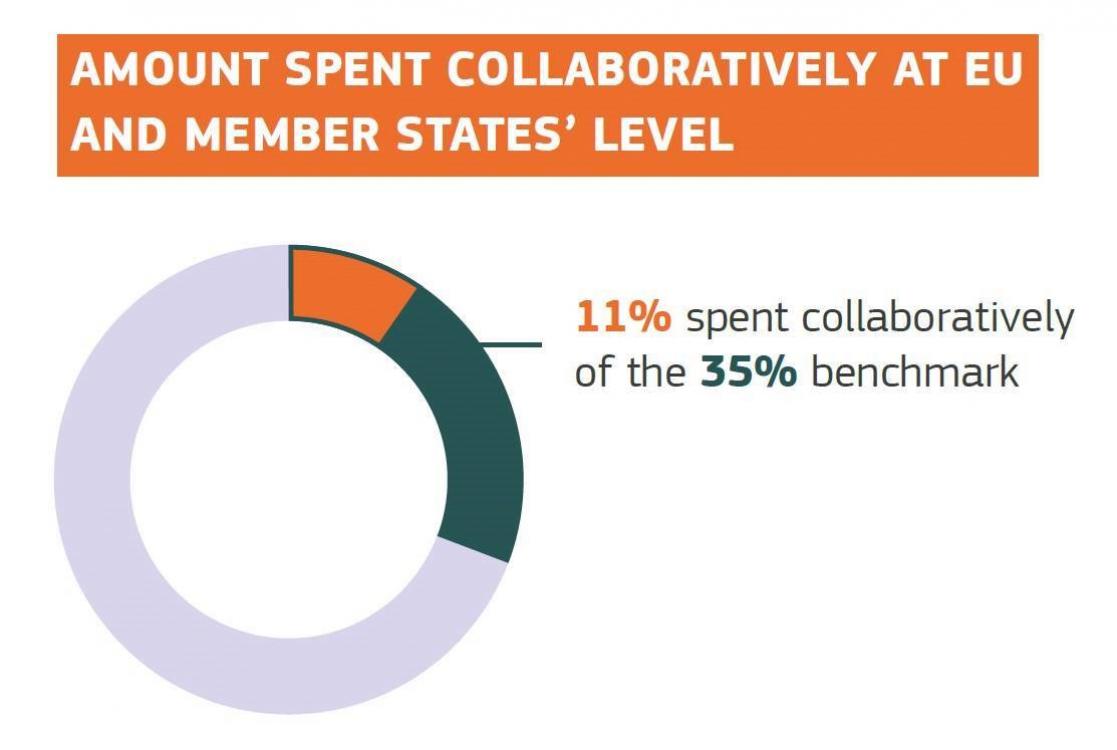We need to increase European defence capabilities, working better together

Russia´s ruthless assault on Ukraine brought war back to European soil. By the number of military assets involved in the war, its human costs and the global consequences, it represents a tectonic shift of the European security landscape. Confronted with this conflict, the EU has reacted quickly and strongly, by offering political, financial, humanitarian and military support to Ukraine. Now it is clear that Europe is in danger, as we claimed before the start of the war when we presented the Strategic Compass, which since has been approved by the Council and offers a plan for a real step change for a stronger and united security and defence policy.
The new security environment demonstrates that the EU needs to take on more responsibility for its own security. For this, we need modern and interoperable European armed forces, looking at the higher-end of the spectrum and also striving to scale up capabilities and forces. The depleted stockpiles resulting from the military support we provided to Ukraine are the most obvious example of our shortfalls. However, this comes on top of the ones inherited from past budget cuts and underinvestment.
The below figure reflects how the aggregated defence expenditure of EU members states has been decreasing since the beginning of the eurocrisis in 2008, reaching a bottom in 2014 – when Russia annexed Crimea – and just now reaching pre-crisis levels (see factsheet that accompanied the Joint Communication with more data here).

This figure has become very popular and there have been a lot of references to it last week. However, it is not a recent “discovery”, but was already presented in a December 2021 EDA report. In this report, the EDA (which has been created by the Lisbon Treaty to support member states to improve military capabilities and identify development priorities) highlighted not only the big “hole” in defence expenditure, but also the persistent reduction of collaborative investment among member states.
“Data shows a silent process of underinvestment in the European armies.”
Data shows a silent process of underinvestment in the European armies and budget cuts imposed by austerity policies. I am not discussing here the pertinence of these cuts and the political decisions that were behind them. However, it is good to be aware in order to evaluate future expenditure policies in moments when budgets might again be tightened.
It is also important to note the lack of coordination in the context of which these reductions were done: in 2020, only 11% of investments were spent collaboratively – which is below the 35% benchmark agreed by member states in the EDA framework. The challenge today is to coordinate better the process of increasing expenditures and to avoid increasing the duplications and gaps.

The gaps we face
In fact, we are facing a variety of gaps: when it comes to total military capabilities, to general defence investment, to research and development, and to comparisons with other countries’ military developments.
Some key figures illustrate some of these gaps:
- From 1999 to 2021, EU combined defence spending increased only by 20% - against 66% for the US, 292% for Russia and 592% for China. Certainly, one have to take into account the starting level of the military capacities, but this figures show very different trends
- Between 2009 and 2018, member states cuts amounted to an aggregate defence under-spending of around €160 billion.
- Had all member states spent 2% of their GDP on defence with 20% dedicated to investment, since 2006 until 2020, this would have resulted in approximately additional €1,1 trillion for defence, of which around €270 billion on investment.
- The lack of cooperation between member states on defence is estimated to cost tens of billions euros per year. Despite increased European defence expenditure in 2020, there was a new low point of only 11% of investments spent collaboratively – far below the 35% benchmark.
- In 2020, member states’ combined defence Research and Technology (R&T) spending amounted only to €2.5 billion, 1.2% of their total defence spending, below the 2% benchmark set as binding commitment within the Permanent Structured Cooperation.
All these figures illustrate trends and shortcoming that we need to tackle and it is against this backdrop that EU leaders in Versailles asked for a defence investment gaps analysis. The recently adopted Strategic Compass, already sets out an ambitious plan for strengthening the EU's security and defence policy by 2030 and we have to move forward in this spirit.
“All these figures illustrate trends and shortcoming that we need to tackle.”
In the last weeks, many member states have announced increases in their defence spending. This is very positive. However, as I said before, it is crucial that they do not only spend more, but also better together to prevent further fragmentation. Allow me to insist on this idea, because if every member state increases its defence spending, multiplying by “x” its current expenditure by investing on its own without European coordination, the result is likely to be a waste of money, with the risk of multiplying existing loopholes and needless duplications.
This is why the Joint Communication we presented this week, with my Commission colleagues Margrethe Vestager and Thierry Breton, features concrete proposals on how to promote cooperation on defence investment and strengthen the European defence industrial and technological base.
From diagnosis to action
The EDA has provided the preliminary analysis of the defence gaps, building on the work done through the Capability Development Plan (CDP) and the Coordinated Annual Review on Defence (CARD).
In a nutshell, three main lines of actions have been identified. Member states must:
- First, work on the combat readiness of forces, including on stockpile replenishment.
- Second, augment existing capabilities, quantitatively and qualitatively (mass and volume), within the next five years with a focus on gaps accumulated from the past, such as strategic enablers, modernisation of air defences, cyber and space-based capabilities, just to name a few.
- Third, in a longer period, develop jointly future key capabilities such as Main Battle Tanks, advanced anti-access/area denial (A2/AD) capabilities or Space Situational Awareness.
“As ever, we need political will and leadership.”
We will create a joint Task Force to support short-term procurement needs and to encourage member states to buy together. Within this Task Force, EDA can already facilitate such short-term joint procurement building on its expertise and experience in this field. The Commission will also launch an instrument to reinforce European defence industrial capabilities through joint procurement and will propose a European Defence Investment Programme Regulation.
In addition, we will look into strengthening the budgets of the European Defence Fund and military mobility through the Connecting Europe Facility. Finally, we propose for the European Invest Bank (EIB) to assess in cooperation with EDA how it can support the European defence industry to develop critical technologies and industrial capacities with joint procurement.
As ever, we need political will and leadership, and rising defence expenditures offer us a one-off opportunity to fix some of the long-standing issues that have hampered the EU’s defence efforts.
The time to push forward European defence is now. We need to strengthen the European defence industrial base and to be operational with the needed military capacities. To be able to increase our military capacity to defend ourselves, to make the NATO stronger and to support better our partners whenever needed.
MORE FROM THE BLOG

“A Window on the World” – by HR/VP Josep Borrell
Blog by Josep Borrell on his activities and European foreign policy. You can also find here interviews, op-eds, selected speeches and videos.
